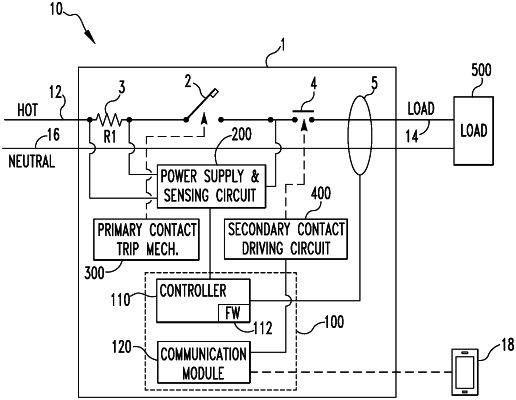| CPC H01H 89/08 (2013.01) [H01H 83/20 (2013.01); H02J 13/0004 (2020.01); H01H 2071/665 (2013.01); H01H 2083/203 (2013.01)] | 23 Claims |

|
1. A remote load switching circuit breaker comprising:
a primary contact coupled to a primary contact trip mechanism and structured to trip the remote load switching circuit breaker upon detecting a fault condition by a sensor;
a secondary contact in series with the primary contact and coupled to a secondary contact driving circuit, wherein the secondary contact is structured to be switched on and off remotely by a user using a user device communicatively coupled to the remote load switching circuit breaker via wireless communication;
a shunt element coupled to the primary contact and structured to measure a line voltage;
a control circuit comprising a controller and a communication module communicatively coupled to the user device for receiving a user command and transmitting a message associated with the remote load switching circuit breaker to the user device, the controller including a firmware configured to instruct the control circuit to perform a pre-check for at least one of power quality test and breaker self-test based at least in part on the user command; and
a power supply and sensing circuit structured to supply power to the control circuit, the secondary contact, the secondary contact driving circuit, and the primary contact trip mechanism, and to sense voltages at a plurality of points in the remote load switching circuit breaker and transmit the sensed voltage to the controller for measuring respective current based on the sensed voltages, wherein the secondary contact is fully powered by the power supply and sensing circuit, without having to receive power from an external power supply.
|